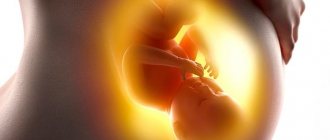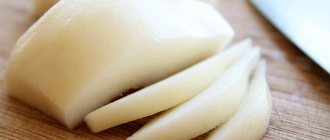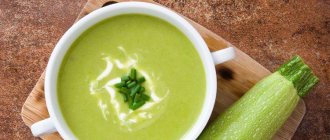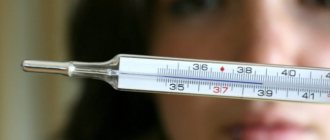Constipation during breastfeeding is a common occurrence after childbirth. Sometimes the disease appears already during pregnancy due to hormonal changes, changes in diet or poor nutrition and remains for some time after childbirth.
However, constipation in a nursing mother usually appears after the birth of the baby. The cause of the disease is injuries to the rectum that a woman receives during childbirth. The situation is aggravated by poor diet and lack of an active lifestyle.
Causes
- The intestines react sharply to changes in the state of hormones in a woman’s body after childbirth;
- Pressure of an enlarged uterus on the intestines during a long period of pregnancy. In addition, after childbirth, the uterus remains enlarged for some time;
- Perineal muscles weakened due to childbirth;
- Incorrect diet during breastfeeding. Too fatty and spicy, salty and sweet foods lead to bowel dysfunction. In addition, some foods harden the stool and interfere with normal bowel movements. These are boiled eggs, semolina porridge or strong tea;
- Insufficient fluid intake. Remember that liquid not only affects the normal functioning of digestion, but also stimulates lactation. The required volume for a nursing mother is 2 liters per day;
- Stress, depression and mental disorders.
Main causes of constipation
What reasons can cause problems with bowel movements? These include:
- the presence of stitches in the perineum, pain when trying to push with constipation, and the woman’s fears for their integrity;
- low physical activity in a woman with a child;
- ignoring the urge to defecate due to constant employment;
- compression of the intestines by an insufficiently reduced uterus in the first weeks after childbirth;
- unbalanced diet of a nursing mother due to fear of disorders in the baby;
- displacement of intestinal loops during pregnancy by a rapidly growing uterus;
- the use of certain types of medications that normalize the body’s condition after childbirth;
- the appearance of organic diseases - diabetes, hemorrhoids, tumor formations, injuries during childbirth;
- changes in the muscles of the perineum and abdominal muscles (strains after pregnancy);
- hormonal changes after childbirth or due to a new pregnancy soon after childbirth.
Specifics of constipation
Constipation is a process in which there is no bowel movement for three or more days, or it is accompanied by difficulty and pain due to too dry, hard stool. The reasons, as we have already found out, are psychological and physiological. Therefore, constipation is divided into two types:
- Anatomical constipation in a nursing mother occurs after a cesarean section or other surgical intervention. In addition, poor nutrition can also be a cause. This type characterizes a decrease in muscle tone of the intestinal walls.
- Spastic constipation during breastfeeding occurs due to severe stress, depression or anxiety. In this case, first of all, it is necessary to restore mental balance and calm down. How to overcome depression after childbirth can be found here.
Most often, constipation does not require special treatment and goes away within two to three weeks after birth. If the illness does not go away for a long time, do not rush to treat constipation with medications. Not every drug is compatible with lactation. Many suppositories are generally contraindicated during breastfeeding.
Often the composition of the drug penetrates into the blood and milk, which negatively affects the course of lactation. The medicine can change the quality of milk and negatively affect the development and growth of the baby.
How to recognize constipation{q}
Many women experience constipation during pregnancy and already know its first symptoms. For those who experience constipation for the first time, you need to know the symptoms of defecation disorder in advance in order to begin treatment of the disease in time.
- no bowel movements for more than three days;
- pain during bowel movements worries the young mother every time;
- feces becomes smaller, it comes out in groups, looks like balls;
- there is pain in the lower and left side of the abdomen;
- cracks appear in the anus;
- general malaise appears and increases;
- the temperature may rise, and if feces are retained for up to several weeks, it may rise to 39 degrees;
- lack of stool causes irritability.
If such symptoms begin to appear, and new ones are added to the old ones, this is a reason to consult a doctor so that he can determine the cause of your constipation, if you cannot do this on your own.
A nursing mother needs to adjust her stool as quickly as possible.
After all, fecal stagnation contributes to intoxication of the body, which negatively affects not only the well-being of the sick woman, but also the health of her baby.
Diet of a nursing mother for constipation
To eliminate constipation in a nursing mother, it is enough to adjust the diet. A proper diet is the key to successful lactation and the well-being of mother and baby. Avoid highly fried, salty and spicy foods. Eliminate carbonated drinks from the menu, and consume sweets and starchy foods in limited quantities. Salt and other spices greatly irritate the intestines, which further worsens the condition.
Always eat vegetables and fruits stewed, boiled or baked. The raw product takes longer to digest and makes bowel movements more difficult. In addition, they negatively affect the still fragile body of the newborn. Allergies, poisoning or colic may occur in the infant. Therefore, introduce new foods into your diet carefully.
| Benefit | Harm |
| Dried fruits (figs, prunes, dried apricots) | Astringent fruits and berries (persimmon, blueberries, black currants, etc.) |
| Fermented milk products (kefir and low-fat cottage cheese, yogurt without additives) | Milk, black tea, milk tea, coffee beans |
| Flaxseed and olive oil can be drunk directly on an empty stomach, one tablespoon 1-2 times a day | Pasta, mashed potatoes and boiled eggs |
| Boiled beets and carrots, as well as carrot and beet puree | Eggplants, sour apples, green firm pears |
| Natural juices from fruits and vegetables | Grape and mint juice |
| Porridge from gray and brown cereals (rolled oats, millet, oatmeal) | White porridges (semolina and rice) |
| Fatty salted fish, but in limited quantities. You can pre-soak the fish in water to remove excess salt. | Pure meat and strong meat broths. Stew meat with vegetables or add to puree |
| Herbal decoctions of fennel, cumin and anise | Baked goods and sweets (bread, cookies, crackers, chocolate) |
Tips from the article “Nutrition after childbirth” will help you create the right diet for breastfeeding. If you have constipation, follow a drinking regime and drink at least two liters a day. One glass of drinking water in the morning on an empty stomach stimulates the intestines.
Constipation in a nursing mother can be easily treated with a little physical activity. Do exercises, walk, go to the pool. Yoga is safe to practice while breastfeeding.
Folk laxatives
The use of folk laxatives is only possible after consultation with a doctor, because substances in herbal preparations can pass into breast milk . Safe remedies that relieve constipation in a nursing mother include laxatives:
- prunes - decoctions and infusions are prepared from it, the steamed pulp is eaten, and added to salads;
- figs, which are steamed with hot milk;
- decoction of dried apples;
- pumpkin – juice from a raw vegetable, stewed, baked;
- beets - boiled in salads;
- carrots - boiled or raw.
Vegetables and fruits should be introduced into the diet gradually, in small portions, while monitoring the condition of the baby and mother. If there is no acute reaction, the dose is increased. Using olive oil for dressing vegetable salads helps a lot.
Medicines for constipation
Many laxatives are prohibited for use during breastfeeding. Thus, Regulax, Gutalax, Sennilax and other drugs are not compatible with lactation. However, there are a number of safe and recommended medications during lactation. Thanks to a special composition that does not penetrate into milk, they do not affect the baby. Glycerin and sea buckthorn suppositories are most suitable for nursing.
| A drug | Characteristic | Contraindications/side effects | Price |
| Lactulose | Soluble powder stimulates intestinal function; the effect occurs only after 1-2 days | Hypersensitivity, intestinal obstruction, blood in stool (if not hemorrhoids) / diarrhea and flatulence | 100 rubles |
| Duphalac | The syrup contains lactulose and pure water, and also does not have an immediate effect. | Lactulose intolerance, intestinal obstruction, diabetes mellitus/flatulence and diarrhea, diarrhea and abdominal pain | 300-400 rubles |
| Forlax | Instant powder containing orange and grapefruit oil; valid in 1-2 days | Intolerance to components, ulcers and colitis, intestinal obstruction/flatulence, abdominal pain, nausea and vomiting, allergies | 150-200 rubles |
| Fitomucil | Soluble powder containing plantain seeds and homemade plum fruits | Intestinal inflammation, sensitivity, intestinal obstruction/allergies in rare cases | 250-500rules |
| Sea buckthorn candles | A harmless product with a herbal composition, but less effective than other products | Hypersensitivity/burning in the anus after administration and allergic reaction to sea buckthorn | 100 rubles |
| Glycerin suppositories | Safe laxative during lactation and pregnancy | Acute hemorrhoids and intestinal inflammation, anal fissures/bowel irritation, burning and pain | 150 rubles |
| Evacue candles | An alternative to a triple effect enema with an immediate effect of 5-10 minutes | Individual intolerance, children under 12 years old / allergies and irritation | 500-600 rubles |
| Microlax candles | Ready-made viscous solution for microenemas with a quick action of 5-15 minutes | Individual intolerance/allergy and irritation | 300-500 rubles |
If the illness does not go away for a long time, constipation in a nursing mother must be treated. Chronic disease can easily lead to the formation and development of hemorrhoids. What suppositories to choose for this problem can be found in the article on the treatment of hemorrhoids during lactation.
Only the attending physician can prescribe the dosage and regimen! Be careful, as often an overdose of constipation medications leads to profuse diarrhea in a nursing mother.
Use of laxatives
During breastfeeding, there are restrictions on the use of laxatives for women due to their effect on the quality of breast milk and the possible occurrence of loose stools in the baby.
Prohibited drugs
Drugs prohibited for nursing mothers:
- based on senna leaf (Trisasen, Sinade, Sennalax);
- Guttalax;
- Bisacodyl;
- Dulcolax.
All these medications increase the tone of the mother’s intestines and can provoke colic in the child.
Approved medications that are prescribed to a nursing mother for constipation are:
They do not affect intestinal tone and do not pass into breast milk.
The combination drug Duphalac is based on lactulose, which is neutral for the digestive tract - it cannot be broken down and absorbed in the intestines. The action of lactulose is based on an increase in intestinal contents due to water, its gentle spontaneous cleansing. Prebiotic medications (Duphalac) introduce beneficial bacteria into the intestines, ensuring the normal process of fecal formation.
Another group of drugs is allowed during breastfeeding - Fortrans and Transiner, Forlax. The main active ingredient in these dosage forms is Macrogol. The drug taken is used diluted in water. The principle of action of the medicine is to increase intestinal contents by attracting water with Macrogol and natural cleansing. The duration of action of drugs varies. For the effectiveness of the products, compliance with the drinking regime is required - at least 2 liters of water per day.
An excellent way to solve the problem of constipation in nursing mothers are suppositories for constipation with glycerin - Glycerol or Glycelax.
They should be used after consultation with a doctor and in the absence of lesions of the rectum.
Occurrence of disease
The causes of constipation during lactation vary. The most common sources of constipation include:
Considering the origin and occurrence, endocrinologists distinguish the following types of constipation:
- Nutritional type - the cause of the appearance is an improper diet, indigestion, and insufficient fluid intake.
- Dyskinetic type - occurs when intestinal dysfunction occurs.
- Conditioned reflex type - appears due to emotional stress, nervous disorder, caused by childbirth.
Herbal infusions
A good remedy that equally helps both mother and child during breastfeeding is a decoction of anise, dill and caraway seeds. To prepare it, pour boiling water (0.5 l) into a thermos and leave overnight for a teaspoon of each type of seed. You should drink a tablespoon before meals.
If constipation during breastfeeding in a mother is combined with increased nervousness and cramps in the intestines, you should use the following herbal mixture.
Take anise fruits in equal parts; mint leaves; chamomile flowers; crushed valerian roots; dried nettle leaves; dried strawberry leaves. Two tablespoons of the mixture are poured into 500 g of boiling water in a thermos, left for at least 8 hours, take a tablespoon before meals. You should carefully monitor the child's condition and discontinue the drug if he becomes excessively capricious.
Symptoms
A woman may experience constipation while breastfeeding for several reasons. Symptoms can be single or appear as a complex. The most common ones include:
Due to difficult defecation, the stool becomes hard, causing damage to the anus and intestines. This is signaled by defecation with blood, accompanied by pain.
Blood in the stool is not always the cause of constipation. The reason for its appearance lies behind intestinal inflammation, cancer, and the presence of worms. If there are difficulties with the digestive system, blood may come from the damaged organ and turn the stool black. Such a signal cannot be ignored; you need to urgently make an appointment with a doctor.
Symptoms of the disease
Constipation in women after childbirth can be accompanied by many unpleasant symptoms:
- pain, bloating, flatulence in the abdominal area;
- headache may occur;
- the woman becomes irritable, fatigue increases;
- loss of appetite;
- no stool for several days;
- feces are hard, dark in color, sometimes in the form of separate pieces;
- there is a feeling that the intestines have not been completely freed from feces.
When a woman is constipated, her breast milk contains less enzymes that the baby needs to digest food.
As a result, similar problems may arise in the baby, so when breastfeeding it is important to avoid constipation.
How to eat
To restore strength, a woman must eat a healthy, balanced diet. If a young mother neglects the rule, the risk of constipation increases greatly.
When creating a menu to combat constipation, it is worth taking into account the child’s possible allergies. Nutrition must be correct. When creating a menu, you need to consult your doctor. A properly formulated diet for nursing mothers will help cope with the disease and normalize metabolism.
Mothers are often advised to keep a food diary to identify infant allergies, but it can also be beneficial for the mother's own health.
In the first weeks, avoid eating flour products. If complete refusal is not possible, then reduce the portions. Fried and salty foods can not only cause constipation in a nursing mother, but can also cause heartburn.
Seasonings and spices are not suitable for complete nutrition. Replace the carbonated drinks you loved before pregnancy with plain water. It is also advisable to exclude fruits and vegetables that cause bloating and flatulence.
To relieve difficulty with defecation, millet, pearl barley, and buckwheat porridge will help. Fermented milk products have a laxative effect. Fiber-rich foods help stimulate intestinal function, and consuming vegetable oil helps improve excretory function. Vegetables cooked or steamed have a laxative effect.
How to deal with the problem?
Treatment for the mother is based on the diet that most effectively helps get rid of the problem. As mentioned earlier, you can eliminate the disease by knowing the cause. Based on this, several ways to cure constipation are proposed:
1. During lactation, it is very important to eat foods containing large amounts of fiber, which will help fight the disease. This applies to fruits and vegetables - carrots, pumpkin, beets, apricots, watermelon and plums. Naturally, it is necessary to observe the measure. When introducing a new product into the diet, carefully watch the child’s reaction. Oat porridge, bran bread, dried fruit, sunflower oil and kiwi are also considered excellent laxatives after childbirth.
2. Physical activity is of no small importance in treatment. Regular walks and exercise throughout the day are recommended. This will improve intestinal activity by breaking up stool. At the same time, be sure to drink plenty of fluids.
3. An excellent way to get rid of constipation is to use rectal suppositories. Glycerin suppositories, which are effective in the presence of ruptures, will help with this. Contraindications apply only to those who suffer from hemorrhoids, fissures and tumors in the rectum. But before purchasing medications for treatment, be sure to consult a doctor.
If there are stitches on the perineum or cervix, the young mother must undergo a cleansing enema before being discharged from the hospital. In the future, act individually.
If constipation does not go away for a long time, in order to eliminate it, it is recommended to start consuming bran in its pure form or products containing it, for example, Eubicor. For treatment, it is enough to take it 3 times throughout the day. To get rid of constipation, a nursing mother should not drink laxatives, which are used by everyone. The result of such treatment of the problem will be abdominal pain with diarrhea in the baby.
To eliminate constipation in mothers during lactation, many medications have been created:
1. It is recommended to cure problematic stools with drugs based on lactulose. The digestive system does not digest or absorb it. The main effect is acidification and softening of the intestinal contents, populating the organ with lacto- and bifidobacteria. These products include Duphalac, Lactulose Poly, Portalac, Normaze and Romphalac. Once in the large intestine, they have a laxative effect without affecting peristalsis. The amount of feces increases, causing its natural waste.
2. To treat constipation during lactation, there are several other laxatives - Fortrans and Forlax, Forteza RomPharm and Transiner. They are created on the basis of macrogol and are available in the form of a powder for diluting a suspension. The molecules of the substance have a linear shape that can absorb water. In the body, it does not change its appearance, reaching the problematic organ, providing a laxative osmotic effect.
The presence of symptoms such as: 1. bitterness in the mouth, putrid odor; 2. frequent gastrointestinal disorders, alternating constipation with diarrhea; 3. fatigue, general lethargy; indicate intoxication of the body by parasites. Treatment must begin now, as helminths that live in the digestive tract or respiratory system.
3. Another approved means for treating young mothers are senna, represented by Senade, Sennalax, Regulax and Glaxenna. Indian or Alexandrian senna is a shrubby plant. Although domestic experts do not recommend these drugs to young mothers due to their allegedly irritating effects on the intestines, including the child’s organ. But according to the International Directory, these data have not been confirmed. The plant has a mild laxative effect without being absorbed into the intestines. This allows young mothers to treat constipation during lactation without fear of harming the baby.
It is necessary to combat constipation wisely, without taking laxatives on a regular basis. After some time, the effect of treatment decreases, forcing you to increase the dose. According to doctors, laxatives are only an emergency aid, but not a solution to the problem as a whole.
Physical exercise
One of the effective methods to combat constipation is physical exercise. Morning exercises have a positive effect on the mother's body. It should be performed on an empty stomach, drinking a glass of warm water. You should start with light exercises, gradually adding new elements.
Since the mother’s body is exhausted after childbirth, walking is an excellent option. The duration should be increased every day. Use breathing techniques in conjunction with walks and exercise.
Exercises
Now we will talk about another effective method of combating constipation after childbirth. What to do{q} Of course, move more, but do not overwork. Walking in the fresh air is beneficial for absolutely everyone, and if light gymnastics is not contraindicated, then do not regret ten minutes a day to do it.
On the second day after giving birth, you can perform the following exercise: lie on your back, bend your knees. Take a deep breath and inflate your stomach, hold for a moment, exhale sharply through your mouth and suck in your stomach. Repeat at least five times.
On the third day, you can add the following to this exercise:
- The situation is the same. As you inhale, tighten your pelvic muscles and hold your breath. Exhale sharply through your mouth and relax your muscles.
- Get out of bed, feet shoulder-width apart, arms extended forward. Inhale and smoothly turn to the right, your right hand moving as far as possible in the direction of the turn. As you exhale, return to your starting position. Repeat the exercise with the other hand.
Fourth day:
- Standing: Clasp your hands in front. Rotate the body, moving the lock as far back as possible.
- Lying on your back: arms along the body, legs bent at the knees. Inhale - lift your pelvis, hold, exhale - take the starting position.
Fourteenth day:
- Standing, feet shoulder-width apart, hands on shoulders, elbows forward. Connect alternately the right elbow and the left knee, the left elbow and the right knee.
- Lie on your back and alternately pull your knees towards your body.
In addition to these exercises, you can use the following method:
- Atonic constipation - in the morning (lying in bed), intensively massage the umbilical area with your palms for five minutes, gradually moving towards the groin area.
- Spastic constipation - gentle stroking clockwise.
READ MORE: Swelling of the legs after cesarean section: why the legs swell
Treatment of the disease
Constipation should be treated immediately as soon as a woman notices the first symptoms. The disease has an adverse effect on mother and child. But it is worth remembering that the chosen treatment method should not affect feeding.
If changing your diet does not improve your stool, you should resort to treatment with medications. But be sure to consult a doctor.
When breastfeeding, the use of drugs containing lactulose is allowed. It is not absorbed into the walls of the stomach and intestines, but forms beneficial bacteria that help eliminate and soften stool. Lactulose-based laxatives do not harm the baby.
Glycerin suppositories are a safe option for breastfeeding. They soften stool, make intestinal motility work, and are not addictive if used correctly. Cannot use suppositories if there are cracks in the anus.
Traditional methods will help you get rid of constipation. An excellent solution would be treatment with herbal remedies. Herbal medicine not only helps eliminate constipation, the woman begins to feel better.
Herbal medicine does not have a negative effect on the baby. The preparations have a natural composition. It is recommended to prepare decoctions. After taking such decoctions, lactation is stimulated and the general tone of the mother’s body increases.
To ensure proper bowel function, massage the abdomen. Massage the abdomen in a clockwise circular motion, stimulating the functioning of the stomach.
- Gooseberry decoction. Pour a handful of berries with hot water and leave for 15 minutes. Pour the gooseberries into a container and simmer for 5-7 minutes. Remove the broth from the stove and let cool. Divide the medication into 2-4 times, drink half a glass.
- Milk decoction with figs. Boil a glass of milk and pour in the figs. Let the mixture sit for 15 minutes. Take one spoon per day.
- A decoction of fennel, anise and cumin. The herbal infusion helps keep the body in good shape and will enable the young mother to cope with constipation.
A method familiar to everyone. Fill the bulb with liquid, insert the tip into the anus, and fill the intestines with water. Carry out the procedure while lying on your side.
- Cleansing enemas. The composition includes boiled water, the required volume for the procedure is no more than two liters. When it enters the intestines, it softens feces and removes them naturally. Withdrawal is carried out within 10 minutes.
- An oil enema contains water and any vegetable oil. The beauty of such an enema is its mild effect. But the action is much slower than cleansing, you should wait 12 hours.
- A salt-based enema enhances intestinal motility and affects receptors. It starts working in twenty minutes.
Treatment of constipation
How to get rid of constipation when feeding a baby? To improve a woman’s condition, it is necessary to identify and eliminate the cause of difficulties with bowel movements by adjusting:
- emotional condition;
- nutrition;
- physical activity.
For emergency assistance, after consultation with a therapist, laxatives are used - pharmacological drugs or folk remedies.
Simultaneous regulation of all components allows you to establish the function of cleansing the body. After this, it is necessary to maintain optimal physical activity and a balanced diet to maintain normal stool.
The use of an enema for constipation in a nursing mother is possible only in emergency cases. The temperature of the water should be taken into account - for spastic type constipation, you need to use warm water (up to 37-38 degrees Celsius), which will help the intestines relax. For asthenic type constipation, intestinal motor activity is stimulated by an enema with cool water.
Prevention
A woman should think in advance about preventing constipation during breastfeeding and pregnancy. The disease can be prevented long before it appears.
Remember, products that hold back stool are contraindicated for a young mother. The list includes chips, crackers, some types of cereals and strong brewed tea. You need to consume more fermented milk products rich in living bacteria.
Stool retention is affected by fatigue and lack of sleep. A woman needs maximum rest. While the mother is resting, the father is taking care of the child.
Due to trauma to the rectum during childbirth, poor nutrition, a passive lifestyle, and hormonal disorders, constipation occurs in a nursing mother. Constipation (stool retention) is possible already during pregnancy. Constipation during pregnancy is physiological, a variant of the norm. But during lactation, a woman should take care of her health, the condition of her intestines and the entire digestive tract. Prolonged retention of stool is fraught with intoxication of the body and can harm the young mother and child. That is why constipation in a nursing mother must be treated.
Why does lactating women experience constipation?
The first weeks after the birth of a child are characterized by the healing of wounds that were received during childbirth. There may have been tears or artificial incisions in the perineum.
- If a little time has passed after childbirth, then the act of defecation is accompanied by severe pain in the perineum.
- If the birth took place via cesarean section, then pain occurs in the area of the sutures.
- Psychological fear - a woman is afraid to push.
- After childbirth, the uterus gradually returns to its true size. Being in a stretched state, it puts pressure on neighboring organs. If most of it is in the intestines, then constipation occurs.
- Lack or decrease in physical activity.
- Accumulated fatigue, postpartum depression, stress.
- Not enough fluid in the diet.
- Often after childbirth, hemorrhoids worsen.
- Diseases of the digestive system.
- Impaired intestinal motility.
- During breastfeeding, a woman has to exclude many foods from her usual diet. Often the body experiences a lack of fiber and coarse fibers.
- Taking certain medications. It is not uncommon for a woman to develop anemia after childbirth. Iron supplements contribute to the development of constipation.
- Changes in hormonal levels.
Women are afraid to eat fruits and vegetables, which can cause bowel problems, allergic reactions and other unpleasant symptoms in the child.
Constipation in a nursing mother is a temporary phenomenon, so it is worth being a little patient and helping to relieve the symptoms.
What are the dangers of constipation while breastfeeding?
Constipation causes psychological and physical discomfort. It is more difficult for a woman to cope with household chores and walk with her baby due to constant pain in the rectum and lower abdomen.
Constipation in a young mother is always accompanied by unpleasant symptoms.
The woman is plagued by headaches, heaviness in the stomach, bloating, and flatulence. Therapists note: many women simultaneously complain of insomnia, overwork, nervousness, loss of appetite and tearfulness. The health of the mother affects the baby. He, like a mirror, screens the emotional state, becomes more capricious, inactive.
Long-term constipation leads to the accumulation of stool in the intestines. Against this background, the process of intoxication begins. Poisoning the body of a nursing mother with toxins also affects the baby.
Causes of constipation in women
Constipation in a nursing mother is caused not only by problems with the intestines - one of the reasons is a certain physiological structure (an innate tendency to slow movement of intestinal contents during its normal structure and functioning). The peristalsis of internal organs is affected by increased hormonal levels during pregnancy and the postpartum period.
Constipation is defined as the inability to have a bowel movement for 72 hours. There are violations:
- physiological , the reason for which is low intestinal activity and poor passage of feces;
- neurasthenic , caused by the emotional state of the mother after childbirth and overstrain of the abdominal wall, the woman’s condition after the birth of the child, possible difficulties in the family.
Weak, atonic intestines are observed in women who have a congenital tendency to this, who have previously undergone abdominal surgery or cesarean section.
Intestinal motility immediately after a cesarean section is affected by high levels of hormones. Why is this happening? In the pregnant woman’s body, they ensured relaxation of the mucous membranes of the internal organs, and remained at a high level for some time after the operation.
With atonic constipation, feces are separated with pain, cracks in the rectum and blood are possible. Constipation caused by a woman’s emotional state is associated in her mind with the experience of stress, pain, nervous shock - as a result, spasm of the abdominal wall makes it difficult to empty the bowels.
Ways to solve the problem
Therapists and pediatricians do not advise a young mother to immediately take medications to combat stool retention. Constipation during breastfeeding can be eliminated naturally. To do this, you need to adjust your diet and monitor physical activity.
To eliminate constipation, the mother needs to follow the rules of nutrition during lactation. This helps restore bowel function and facilitate the process of bowel movements.
A young mother should remember:
- vegetables and fruits are best consumed boiled or baked;
- The daily diet should include porridge (with water);
- exclude spicy, fried, salty, smoked foods from the diet;
- completely give up carbonated drinks;
- Fermented milk products are required on the menu;
- It is better to season dishes with linseed or olive oil;
- meat dishes - only well stewed or baked.
In order not to suffer with bowel movements, normalize its functioning, prevent the development of hemorrhoids, and get rid of flatulence, it is necessary to include fiber in your daily diet. It can be bought in its pure form at a pharmacy chain or in a supermarket. Use the product daily if you are prone to constipation.
In the table below you can see a list of foods that are not prohibited and useful for breastfeeding during constipation. They must be included evenly in the mother’s weekly diet.
| Dairy and fermented milk products | Yogurt, kefir, cottage cheese, sour cream 10-15%. |
| Flour | Bran bread, pasta (in limited quantities). |
| Porridge | Buckwheat, oatmeal, millet, flaxseed. |
| First meal | Soups made with vegetable broth, chicken without skin, with a minimal amount of cabbage. |
| Sweets | Honey, nuts, marshmallows. |
| Beverages | Compote, rose hip decoction, apple juice. |
| Meat and fish | Low-fat sea fish, veal, rabbit meat, turkey, fat-free chicken. |
The diet for breastfeeding and constipation should contain low-fat foods with fiber that have laxative properties. Prune puree has a laxative effect. During lactation, it helps to get rid of signs of constipation for mother and baby.
Drinking water is very important for constipation. If a young mother has a bowel movement disorder, the drinking regime should become the basis of the diet. But you need to drink water correctly. Many women are mistaken that drinking a few cups of tea or compote per day will solve the problem of constipation.
Nutritionists advise mothers to take at least 2 liters of fluid per day during constipation.
These can be natural-based teas, compotes, herbal decoctions, kefir, drinking yogurt. The main rule is that pure boiled or distilled water should make up 50% of all liquid consumed.
A prerequisite before taking any medication prescribed by a doctor is to try alternative methods of therapy. If following a diet, eating laxative foods, and other remedies do not help with constipation, you can seek help from a therapist. The doctor will prescribe a medicine suitable for a nursing mother.
You should not take laxatives on your own during lactation. It is necessary to take into account: the drug should not pass into breast milk and cause unpleasant consequences in the baby.
Medicines that have a laxative effect for nursing women can be divided into several groups according to their release forms. A young mother can choose a more suitable remedy. To help relieve constipation:
- rectal suppositories (suppositories for constipation);
- powders for preparing suspensions;
- syrups.
You cannot use a herbal preparation based on senna. It has too strong an effect on the intestines and can pass into breast milk. The grass can cause cramps, stomach pain, and diarrhea in a child.
If it is more convenient for a woman to use suppositories when defecation is disrupted, you can opt for the following drugs:
- sea buckthorn candles;
- glycerin suppositories;
- Evacue.
Of these products, glycerin suppositories are popular. They have an excellent laxative effect. The effect is achieved due to swelling and softening of the intestinal contents, so feces are eliminated painlessly.
The downside of suppositories is the list of contraindications. Almost all suppositories cannot be used for hemorrhoids, wounds, or anal fissures.
The problem of hemorrhoids is typical for many young mothers after childbirth.
If there are cracks in the anus, inflammation of hemorrhoids, experts recommend choosing sea buckthorn suppositories. They have a good anti-inflammatory effect and a slight laxative effect.
Lactulose-based products are suitable in syrup form:
- Duphalac;
- Lactulose;
- Normaze (according to doctor's indications, for severe constipation).
Preparations based on lactulose also have contraindications. You will have to take the syrup carefully if you are prone to flatulence. In the first days of use it may become stronger. The manufacturer claims: the symptom will go away in 2-3 days. At the same time, a laxative effect will occur.
Unlike rectal suppositories, lactulose syrups have a cumulative effect. The intestines are not always emptied within 24 hours.
If constipation occurs in both mother and baby at the same time (for example, due to poor nutrition of the mother), special Microlax microlisms will help. They are used on babies from birth and are also suitable for nursing mothers. The advantage of the drug is its safe composition and ease of use. The product has a minimum of contraindications.
Causes of occurrence during breastfeeding
As mentioned above, discomfort occurs due to some factors that occur before, during or after pregnancy.
- If a woman has had a prolonged labor without eating, has had a bowel movement during labor, or has had an enema, it is likely that she will experience constipation for a day or two after giving birth.
- With a caesarean section, it takes three to four days for normal bowel function to return. At this time, women note various symptoms characteristic of digestive system disorders, including constipation.
- High levels of progesterone due to hormonal changes during pregnancy can cause chronic constipation after childbirth while breastfeeding.
- Systemic narcotics (such as pethidine and diamorphine) used to relieve discomfort during labor or pain relief for postpartum pain slow bowel movements.
- When breastfeeding, smart mothers take vitamins to stimulate lactation and enrich breast milk with beneficial microelements. Some dietary supplements can cause constipation. Therefore, before using them you should consult your doctor.
- The use of a vacuum extractor during childbirth, and as a result of injury to the anal sphincter, is another cause of postpartum constipation.
- An episiotomy (an incision made in the perineum) can cause pain, which can lead to constipation.
- The digestive system slows down during pregnancy. It will take time to fully restore its functions. Therefore, many women experience the phenomenon of constipation while breastfeeding.
If proper measures have been taken to treat the problem. Constipation after childbirth goes away within a few days. It all depends on the reason for its occurrence and the actions of the young mother. The most important thing is to stay active and not go to extremes.
https://www.youtube.com/watch{q}v=iXyJxobopMw
High-fiber foods may be the best remedy for constipation as they help improve bowel movements. Include whole grains, brown rice, fresh fruits and vegetables in your diet.
Legumes, navy beans, beans, peas, lentils, and soybeans will add so-called soluble fiber to your diet. To prevent bloating after eating, they should be combined with other foods.
To avoid additional troubles caused by gas formation, read the article: What foods cause bloating{q} It provides extensive recommendations on those foods that should be avoided in order to prevent excessive gas formation.
Creamy juice is famous for being one of the most effective natural remedies for constipation. You shouldn’t forget about prunes either. Three prunes contain almost 3 grams of fiber.
It also contains sorbitol, a natural laxative that facilitates bowel movements. A study conducted by the Journal of Digestive Pharmacology and Therapeutics confirmed that regular consumption of prunes softens stools and increases the weekly frequency of bowel movements.
A sufficient amount of fluid makes feces softer, facilitating their rapid removal from the body. Proper hydration is especially important when breastfeeding, so be sure to drink plenty of water.
At the very least, drink 6 to 8 glasses of water per day. In addition, drinking warm liquids immediately after sleep will not only help replenish moisture reserves, but also perfectly tones the body.
Take a walk and do light exercise. Sport activates the tone of the digestive system. It's true that walking can be painful if you're recovering from an episiotomy or cesarean section.
Sometimes, women think that breastfeeding has something to do with constipation after childbirth. This is a misconception. Quite the contrary. While feeding the baby, reflex stimulation of the muscle fibers of the uterus occurs, which in turn has a beneficial effect on the restoration of intestinal function.
Foods such as donuts, white bread, potato chips, unripe bananas, chocolate, fast food hamburgers and sausages are strictly not recommended for consumption, not only after childbirth.
Also, avoid foods high in sugar and fat, such as cheese, ice cream and dairy products, as these tend to aggravate and cause constipation after a C-section.
Often, women in labor are afraid to fart or go to the toilet, expecting that it will give them discomfort and even pain. This is especially true for girls who have undergone an episiotomy.
You should stop worrying about this. Painful sensations will appear only after the nerve endings in the perineal area are restored.
https://www.youtube.com/watch{q}v=tnHM6zVKZNc
But there’s nothing wrong with that either. But causeless worry and anxiety about this can really do harm. Paradoxically, during anxiety, the muscles of the anus tighten rather than relax.
Constipation after childbirth during breastfeeding should be treated immediately, because this problem negatively affects both mother and baby. The method chosen should not interfere with breastfeeding.
To begin with, you should pay attention to the fact that a nursing mother should eat only fresh and healthy foods. Many people have to completely abandon their usual diet.
It is necessary to eat vegetables and fruits daily, which are necessary for the proper functioning of the intestines. If you completely abandon fresh vegetables, this will lead to a number of problems with the intestines and stomach.
The first week after childbirth is quite difficult for almost all mothers. This is due to the fact that progesterone has a negative effect on the intestinal muscles.
After some time, the production of the hormone will normalize, and problems with going to the toilet will end. Complete restoration of the intestines is usually observed a month after the birth of the baby.
Now we will highlight a number of other reasons that can lead to constipation. Among them:
- side effect from drugs;
- curbing urges;
- lack of physical activity;
- the body lacks fluid;
- mother consumes a large amount of fiber;
- metabolic disease;
- the presence of growths or other pathologies.
Lack of bowel movements is associated with disruption of the intestines due to the influence of external or internal factors.
- changes in the hormonal background of a woman who has given birth;
- pressure of the still enlarged uterus on the intestines, which causes stagnation of feces due to its obstruction through too narrow a passage;
- lack of water in the body of a nursing mother and excessive hardening of stool;
- weakening of the abdominal and perineal muscles;
- disturbances in the tone of the intestinal walls;
- poor nutrition of the woman who gave birth, frequent snacking or simply an unbalanced diet due to the fact that the child is transferred to artificial feeding and the mother allows herself to eat unhealthy foods;
- congenital intestinal pathology, which makes itself felt after childbirth.
There are no physiological reasons for constipation, but the emotional background still interferes with defecation.
- fears that postpartum sutures that were placed after childbirth or cesarean section will come apart;
- pain during bowel movements, which is associated with recent childbirth, which forces mothers to postpone this process until later in order to avoid discomfort;
- lack of time - mothers are always busy taking care of the child and there is simply no time to go to the toilet, and in the meantime the body stops giving signals to defecate due to a new habit;
- stress and emotional stress in connection with the birth itself or the fact that a caesarean section was performed;
- diseases of the intestinal tract, when the intestines have defects such as cracks, then going to the toilet is very painful and often does not end in success due to the fact that it is difficult for a woman to overcome her feelings.
Constipation can also occur as a result of a combination of several factors, therefore, in order to get rid of constipation, you must first establish its cause, otherwise symptomatic treatment may not only not help, but also harm the woman’s body and her child, since when feeding with mother’s milk, medications are also passed on .
It is best to consult a doctor so that he can prescribe treatment for you.
The most common factors for defecation problems during breastfeeding include:
- Stretching of the pelvic muscles during childbirth.
- Pressure on the intestines of the uterus, which does not immediately return to its previous size.
- Gradual displacement of intestinal loops to their natural position.
- Unbalanced nutrition of a nursing mother.
- Drinking disorders.
- Lack of sufficient physical activity.
- Discomfort due to hemorrhoids formed during pregnancy and childbirth.
- Psychological factor: fear of rupture of sutures placed during surgical delivery, episiotomy, repair of perineal tears.
- Postpartum depression.
- A physiological decrease in the hormone estrogen (due to the absence of menstruation in breastfeeding women), which affects intestinal motility.
- Taking certain medications, such as iron supplements.
READ MORE: Constant headache after childbirth
The likelihood of constipation after childbirth via cesarean section increases significantly. The occurrence of constipation is promoted by:
- The negative impact of anesthesia, which slows down the natural course of processes in the body.
- Antibiotic therapy used to prevent suture infection.
- Violation of the integrity of the nerve endings during the incision.
Prevention
To prevent constipation after childbirth while breastfeeding from causing problems, you need to follow simple rules of prevention. They boil down to following a diet, uniform and smooth introduction of physical activity, and timely consultation with a doctor. To prevent constipation, a young mother should:
- include products with a laxative effect in the daily menu;
- after giving birth, do swimming, yoga, Pilates, and vigorous exercise;
- walk more in the fresh air with your baby;
- monitor the daily routine, avoid late bedtimes, rest more when the baby is sleeping;
- be less nervous.
During lactation, it is important for a new mother to monitor her diet, and if she suffers from constipation, her diet needs to be composed even more carefully. A doctor can help a woman solve such a delicate problem. Don't be shy and ignore constipation!
If a nursing mother has constipation, does this affect the baby?
The physiological problems of the mother and baby after childbirth are not related; the baby’s stool is affected by the mother’s diet. According to Dr. Evgeniy Komarovsky, if breast milk is well absorbed by the baby’s body, the baby’s bowel movements once a day are normal. Correct tactics for treating constipation and preventing them will help avoid relapses.
After childbirth, it is necessary to take care of your health. To exclude psychological causes of pathology, you need to ensure the correct sleep and rest schedule, sleep at least 7 hours a day. In order to prevent physical inactivity, physical exercise, exercise, and walking in the fresh air are necessary.
The article was approved by the editors
Constipation after childbirth
The birth is over, but some of the “unpleasant extra weight” remains, and some has been added. Among these “somethings” is constipation after childbirth , which can complicate your life after the birth of your child.
Constipation is difficult or systematically incomplete bowel movement (defecation) or its absence for a day and a half or more. Constipation after childbirth is usually associated with several reasons:
- A sharp change in hormonal levels.
- Weakening and stretching of the abdominal and perineal muscles.
- Uterine pressure. In the early postpartum period, the uterus is still enlarged and to some extent continues to put pressure on the intestines. (Immediately after birth, the weight of the uterus is about a kilogram, and it returns to normal, “non-pregnant” sizes only after 6-8 weeks).
- A change in the position of the intestines in the abdominal cavity, its gradual displacement to its usual place.
- Violation of peristalsis (motor activity of the intestine, due to which food masses move).
- Fear of straining due to stitches (placed in case of cesarean section, episiotomy, ruptures) and hemorrhoids.
- Irrational diet for a nursing mother.
- Psychological stress associated with caring for a child and a new family status.
- Congenital features of the intestine, for example, elongated sections.
Why does constipation occur after childbirth?
Based on the mechanism of occurrence, two types of defecation disorders can be distinguished.
The first type is atonic constipation , in which the tone of the muscle wall of the intestine decreases, peristalsis becomes sluggish and unproductive.
Atonic constipation often occurs due to muscle weakness after cesarean section. This is a common intestinal reaction to any surgical intervention in the abdominal cavity. It can also occur due to dietary mistakes.
Another form is spastic constipation , when intestinal tone is increased and peristalsis becomes unproductive due to the “squeezed” state of the intestine. Psychological reasons are more typical for this type.
Atonic constipation after childbirth can be accompanied by nagging, aching pain in the abdomen, a feeling of intestinal fullness, increased gas formation, lack of appetite, nausea, lethargy, apathy, and depressed mood. When defecation occurs, there is a lot of feces, the initial portion is formed, dense, larger in diameter than normal, the final portion is runny. Defecation is painful, there may be tears in the mucous membrane of the rectum and anus, then streaks of blood and (or) mucus remain on the surface of the stool.
With spastic constipation after childbirth, the pain is paroxysmal, most often in the left side of the abdomen. There may be flatulence, lack of appetite, fatigue, nervousness, irritability, nausea, feces in the form of so-called “sheep feces” - very dense stools in small round portions. The urge to defecate may even occur several times a day, but bowel movements are incomplete, difficult, and in small portions.
Separately, it should be said about constipation associated with lengthening of the large intestine. Although outwardly they appear as a spastic form, such constipation is not associated with contraction of the intestines, but with a longer passage of feces along a longer path. At the same time, more water is absorbed back into the body from the intestinal contents, and the stool becomes hard. Such constipation is treated not as spastic, but rather as atonic, but more on that later.
Constipation after childbirth: treatment
To solve the problem of constipation, a young mother in any case needs to choose the right diet, taking into account breastfeeding and possible allergic reactions, which are different for each baby. Healthy: muesli, buckwheat, millet and pearl barley, oat bran, black bread, vegetable oils, fresh and cooked vegetables and fruits (carrots, beets, pumpkin, zucchini, spinach, lettuce, broccoli, cabbage, dried fruit compotes, melon, apples, apricots, cherries), fermented milk products.
You can take a decoction of gooseberries (pour a tablespoon of berries into a glass of water and boil for 10 minutes, then strain). Take it a quarter glass 4 times a day, if necessary, you can add sugar. When brewing tea, you can add slices of dried apples or cherries. In the atonic form of constipation, bowel function is stimulated by a glass of cool water drunk in the morning on an empty stomach.
If you have constipation, you should not drink strong tea, slimy soups, semolina porridge, white bread, wheat bran, polished rice, blueberries, quince, pears, currants, strawberries, legumes, walnuts. Hard cheeses can also slow down peristalsis.
Attention! With frequent and long-term (several times a week for 1-2 months) use of almost any laxatives (both medicinal and herbal), addiction can develop, requiring an increase in the dose of the laxative. The effect of its use weakens, and the problem of constipation itself worsens.
When breastfeeding, taking laxatives - Forlax and Fortrans - is not contraindicated.
The following ready-made laxatives should not be taken while breastfeeding: Gutalax, Regulax, Chitosan-Evalar, Dulcolax (aka Bisacodyl), Doctor Theiss - Swedish bitters.
Preparations {Sennalax, Glaxenna, Trisasen) based on senna (aka Cassia aculifolia) or Alexandria leaf increase the tone of the muscle wall of the intestine, so it should not be taken for spastic forms of constipation. When breastfeeding, they must be taken very carefully, as they can cause intestinal pain in the baby.
To solve the problems of constipation, herbal medicine offers the following recipes.
For spastic forms:
- Freshly prepared potato juice, diluted in water 1 to 1, take a quarter glass half an hour before meals 2-3 times a day.
- A decoction of figs in milk or water at the rate of 2 tablespoons of raw material per 1 glass of boiling water; you need to let it cool at room temperature and take 1 tablespoon 2-4 times a day.
- Mix in equal parts the fruits of anise, nettle herb, rhizome of valerian officinalis, wild strawberry leaves, chamomile flowers, peppermint leaves. Brew a tablespoon of the collection with a glass of boiling water in a thermos and leave for 1.5 hours, then strain. Take half a glass after meals in the morning and evening.
For atonic forms:
- Mix equal parts of anise, cumin and fennel. Brew 2 teaspoons of the mixture with a glass of boiling water, leave for 15-20 minutes, strain, drink a third of a glass 3 times a day half an hour before meals. Please note that for this collection the seeds must be ripe.
- In equal parts, take oregano herb, rowan berries, gray blackberry leaves, stinging nettle herb and fennel fruits. Brew a tablespoon of the collection with 1 cup of boiling water, leave in a thermos for 1.5 hours, strain, take a third of a glass 3 times a day after meals.
- The safest, most effective and multi-use way to relieve postpartum constipation is through exercise. Stretched abdominal muscles do not provide full support to the abdominal organs, there is a risk of developing a hernia of the white line (midline of the abdomen), and the uterus contracts more slowly. Flabby skin and abdominal muscles do not decorate the figure, exacerbating emotional discomfort. Stretched muscles of the perineum cannot become a reliable support for the pelvic organs - there is a threat that the uterus will descend into the vagina, causing prolapse or prolapse of the uterus.
By regularly performing physical exercises, you can get rid of extra pounds acquired during pregnancy, improve your well-being, increase self-esteem, improve your emotional background, and gain strength. They may object to me: “What else is gymnastics when I’m already falling off my feet from fatigue!” That’s right, a mother’s work cannot be underestimated, but this fatigue is not so much physical as psychological, from lack of sleep, from various worries and simply from muscle detraining that gradually arose during the last months of pregnancy. Without exercise, muscle strength cannot be restored. There is no need to tear the barbells, it is enough to spend 5-10 minutes a day on exercises (it is advisable to do a set of exercises several times a day).
The day after birth
- Lying on your back, arms freely along your body, legs slightly bent at the knees, take a deep breath and inflate your stomach, hold your breath a little and exhale forcefully through your mouth, while trying to pull in your stomach as much as possible. Repeat 5 or more times.
On the third day after birth
- The starting position is the same, knees pressed against each other. Simultaneously with the usual inhalation, strongly strain the pelvic floor muscles (as to prevent defecation), holding your breath slightly, exhale and relax. Repeat several times.
- The starting position is the same. Simultaneously with inhalation, lift your right leg and left arm up, and while exhaling, lower it. Repeat with left leg and right arm. Repeat 5 times or more.
- Standing, feet shoulder-width apart, arms extended forward. Without lifting your legs, turn your body to the right, moving your right arm back as far as possible, inhale. Return to the starting position, exhale. Repeat on the other side. Perform the exercise several times.
On the fourth day
- Starting position - as in exercise No. 4. Clasp your fingers together in front of you. As you turn your torso, try to move your arms as far back as possible. Repeat several times.
- Lying on your back, arms free along the body, legs bent at the knees, while inhaling, raise your pelvis and hold it for several seconds, and lower with an exhalation. Repeat.
- Standing on all fours, while inhaling, draw in your stomach and perineum, hold your breath for a couple of seconds, and exhale, relax. Repeat.
2 weeks after birth
- While standing, raise your hands to your shoulders, put your elbows forward. Bend your right leg at the knee and lift it, try to touch your left elbow with your knee. Repeat several times in both directions.
- Make exercise No. 6 more difficult by spreading your legs slightly apart and at the moment of lifting the pelvis, strain the muscles of the perineum, as in exercise No. 2. Repeat several times.
- Lying on your back, alternately bring your leg bent at the knee and hip joints to your stomach.
In the proposed mode, this complex can be performed by women who have not had a cesarean section or deep tears.
If you have had surgery or complex ruptures of the perineum, cervix or other complications, consult your doctor before exercising.
For atonic constipation in the morning, before getting out of bed, you can vigorously rub the skin around the navel and to the left of it towards the groin area with the fingers of both hands. The legs are slightly bent at the knees; the massage should be done for 4-5 minutes.
With spastic constipation, on the contrary, soft, slightly pressured stroking of the entire abdomen in a clockwise direction helps.
To prevent and treat hemorrhoids, after each bowel movement, be sure to irrigate the anus with a cool shower. You can relieve irritation using microenemas with flaxseed infusion (pour a tablespoon of boiling water and leave for 3 hours, take 50 ml of a little warmed infusion into a syringe; the procedure can be repeated several times a day as necessary).
Be careful! The use of horse chestnut preparations (dietary supplements, herbal preparations, creams for the treatment of varicose veins and hemorrhoids) can significantly reduce or even stop lactation.
For irrigation, you can use an infusion of oak bark (2 parts) and 1 part each of horsetail herb, valerian root or horse chestnut seeds, chamomile flowers; and an infusion of 1 part sage leaves mixed with 2 parts oak bark. Both infusions are prepared in the same way: a tablespoon of the mixture is brewed with a glass of boiling water, heated in a water bath for 15 minutes, and infused for another 40 minutes. The infusion is allowed to cool at room temperature and filtered. Compresses, baths or irrigations with these infusions can be done several times a day. To carry out the procedure, the mixture of infusions must be poured into a syringe and irrigated the perineal area without inserting the syringe into the rectum.
In conclusion, I would like to note that constipation after childbirth is an unpleasant problem, but it can be solved. And if you follow all the doctor’s recommendations, you will soon be able to cope with it.
Spasmodic constipation
If stitches are applied, the woman has some fear of defecation. It begins to seem to her that at the slightest tension in order to free the intestines from feces, the edges of the wound will separate. And the woman begins to consciously avoid the process of emptying. Against the background of fear and an unstable state of the nervous system, defecation delays develop.
In the intestine, under the influence of nerve impulses, spasms of smooth muscles occur, causing a narrowing of the intestinal lumen and difficulty in moving fecal clots. Such disturbances in the functioning of the digestive tract very often occur due to severe psychological stress. Childbirth is just such a stress for a woman.
Emotional stress is also caused in a woman by new worries related to caring for the baby, night vigils due to the baby’s restless sleep, and worries about his health. Many mothers suffer from postpartum depression. For some, it is mild, while others are more deeply affected.
Spastic constipation can be recognized by the excrement of excrement. In appearance, they resemble hard balls similar to sheep feces. The patient suffers from increased gas formation and discomfort inside the abdomen. Unmotivated fatigue, irritability, and troubling chills appear.
What to do for spastic constipation
If a woman finds it difficult to deal with postpartum depression on her own, she should consult a psychotherapist or perinatal psychologist. The doctor will help you cope with fears, relieve anxiety, relax, and regain a joyful perception of the world.
In difficult cases, a woman may be prescribed sedatives or antidepressants. With a mild form of depression, a woman can control her emotional state herself. This requires awareness of what happened and the formation of a certain attitude by the patient. In addition, you can drink light soothing teas. Warm baths with the addition of aromatic oils will also help you relax.
Restoring the normal functioning of the nervous system is a decisive factor in the treatment of spastic constipation. However, some other measures should be taken to help rehabilitate the cleansing function of the intestines.
Diet
In case of problems with intestinal function, as a rule, first of all, attention is paid to the patient’s nutritional pattern. For spastic constipation, a gentle diet is needed. The following diet is recommended for patients:
- vegetable puree soups or with weak meat broth;
- porridge with or without milk;
- wheat bread;
- pasta dishes, mashed potatoes;
- low-fat varieties of fish and meat;
- ham;
- all types of fermented milk products;
- freshly squeezed berry and fruit juices, compotes from them, jam;
- weak tea, coffee.
If you have spastic constipation, it is better not to eat fresh vegetables.
They significantly increase peristalsis and can cause severe intestinal spasms. It is better to eat vegetables ready-made, without slightly cooking them. You can prepare salads.
Treatment of hemorrhoids as a cause of constipation
In addition to stitches in the perineum, prolapse of hemorrhoids can cause spastic constipation. Sharp pain and bleeding in the anus cause stress in a young mother, creating fear of the natural act of evacuation. Constipation with blood after childbirth is explained precisely by the presence of hemorrhoids.
In this case, to normalize bowel movements, it is necessary to neutralize the source of the disease. You can use medication, but only as prescribed by a doctor, as well as folk remedies:
Rectal suppositories
- Suppositories for rectal use based on sea buckthorn, propolis and other herbal ingredients. They can be purchased at a pharmacy, or you can make them yourself.
- Herbal decoctions and infusions with anti-inflammatory and analgesic properties. Take internally. Folk remedies such as buckthorn, carrot tops, wild raspberry leaves and others are used.
- Herbal water extracts with a hemostatic effect. Used for hemorrhoids complicated by bleeding. Use nettle, yarrow, red beet juice, etc.
- Cold local baths provide a good analgesic and hemostatic effect.
- To treat the internal form of hemorrhoids, enemas are used. For this purpose, decoctions of wormwood, chamomile, as well as sage, St. John's wort and other anti-inflammatory herbs are prepared.
- Hemorrhoidal cones can be treated with vegetable oils: propolis, St. John's wort, castor, sea buckthorn and others.
Despite all the inconveniences that constipation causes, you should not take laxatives without the advice of a doctor.
Remember, during breastfeeding, uncontrolled use of medications is not allowed, even if they are absolutely safe.
In many cases, an enema can help with constipation. After childbirth during the feeding period, when the baby may develop an allergy to any new product, an enema with milk and butter will be a real salvation for the mother.
Types of constipation and their symptoms
There are three types of constipation, two of which represent separate groups, and the third is simply not included in any of them.
Such constipation has different characteristics and symptoms, which is very important for establishing a diagnosis and prescribing treatment for a young mother.
| Type of constipation | Characteristic | Symptoms |
| Spastic | With spastic constipation, the muscle tone of the intestines increases, which helps to separate the feces into lumps, even into balls similar to sheep feces. Such constipation is caused by psychological reasons and requires elimination of the irritating factor for treatment. | The feces are similar to sheep's, they come out poorly, and after defecation there is a feeling of incomplete emptying. Mom's stomach hurts on the lower left side, the pain begins in attacks. Appetite disappears and irritability and nervousness appear. |
| Atonic | With atonic constipation, the intestinal walls are relaxed and do not compress well. Weak peristalsis leads to slow movement of feces, which subsequently causes difficulties during bowel movements, including cracks and tears in the anus due to the hardness and large lump of feces. Constipation often occurs after a cesarean section, as well as non-compliance with the young mother’s diet. | The feces are large, very dense, and difficult to pass out. Often stool comes out with blood due to ruptures in the rectum. Black stool in an adult occurs when there is bleeding from the large intestine. The mother has a feeling of full intestines, nagging pain in the abdomen, nausea, sometimes vomiting, and lack of appetite. |
| Constipation caused by lengthening of the intestine | Feces take a very long time to move through the intestines, but most often no additional treatment measures are required other than diet to relieve symptoms. | The symptoms are the same as for spastic constipation. |
A doctor can identify the cause and determine the type of constipation; if you want to do this yourself, keep in mind that sometimes the problem may lie deeper than it seems. Yes, diet and exercise will not harm you, but you should not choose laxatives for nursing mothers on your own, much less drink them for a long time, this can harm both the baby and the mother. Therefore, it is better not to take such responsibility upon yourself, but to entrust your health to a specialist. He will tell you what to do and how to treat each type of constipation in a specific case.











